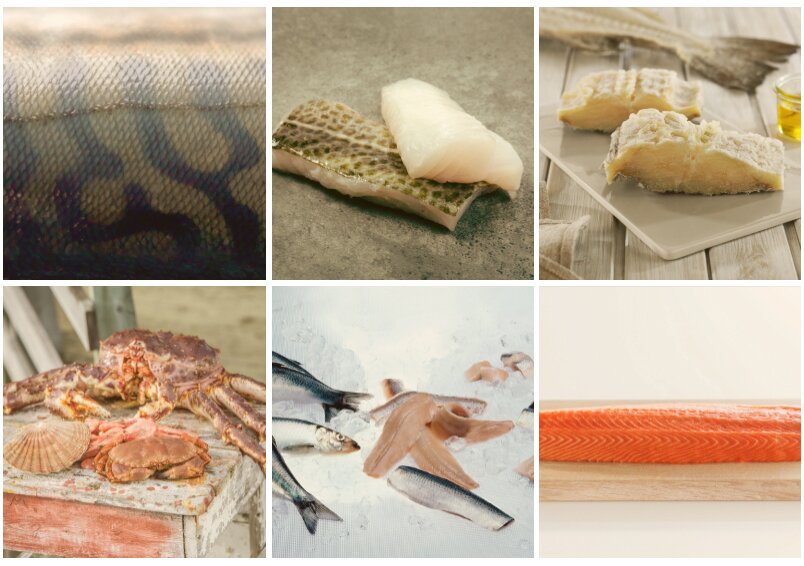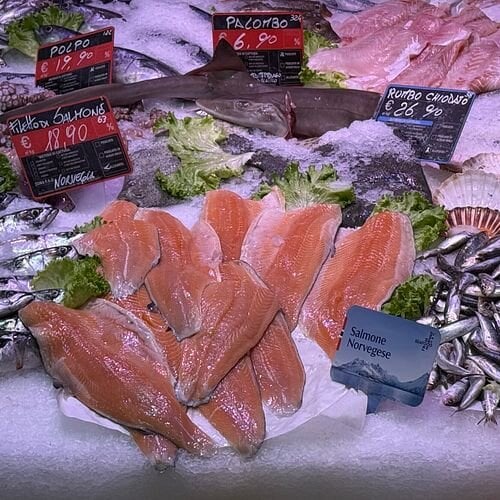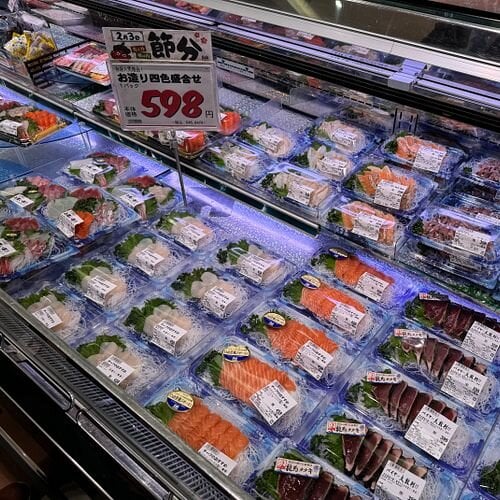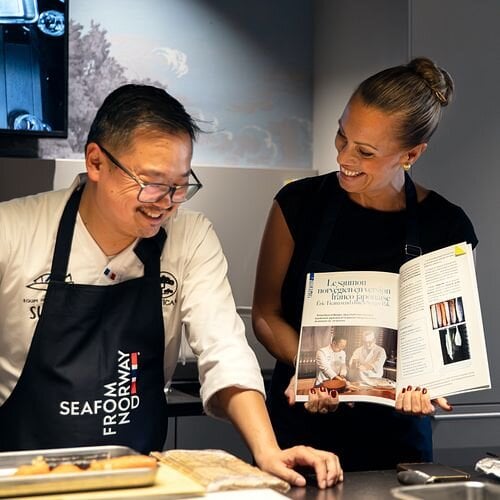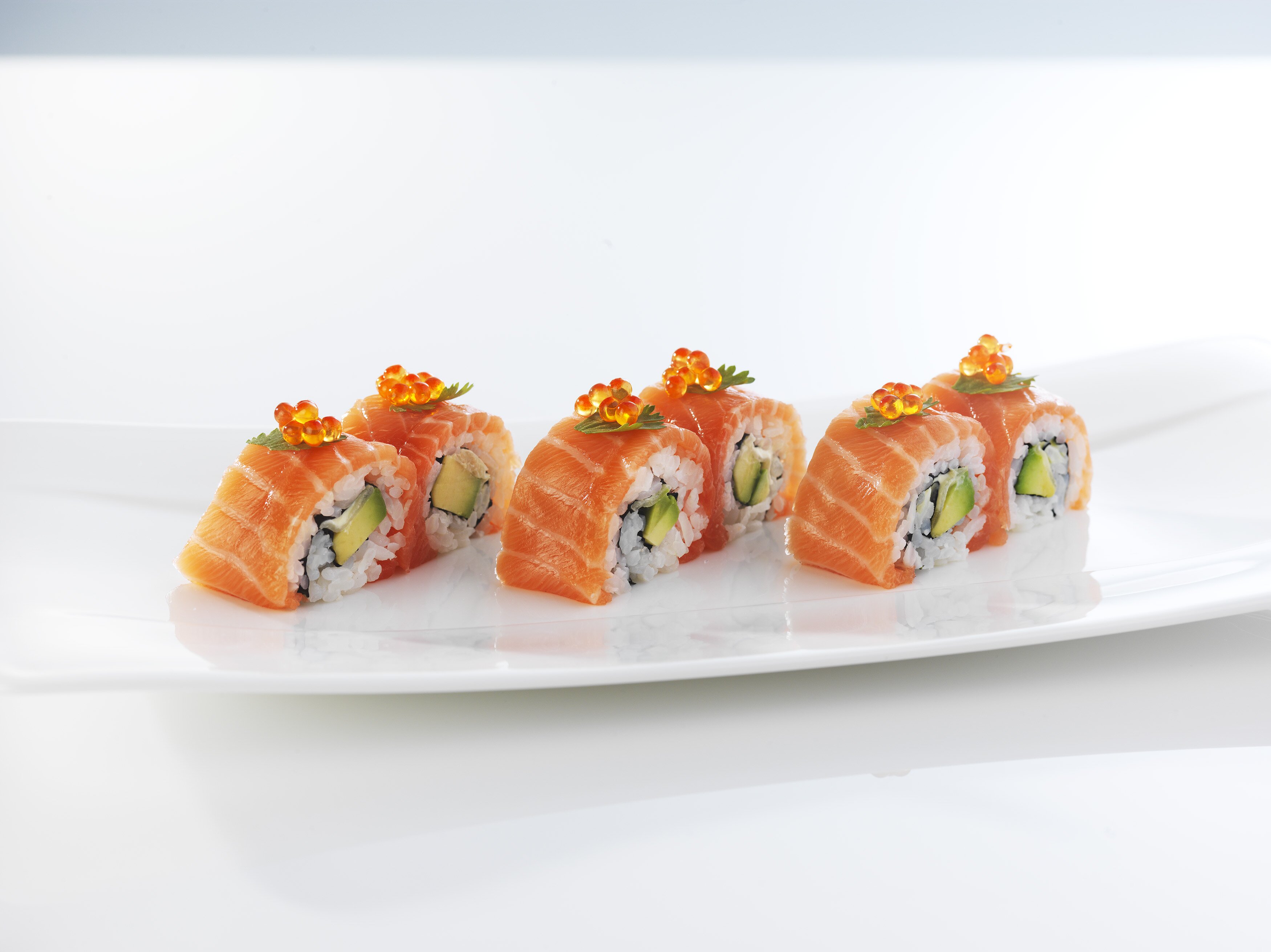«Norway exported seafood at record levels totalling NOK 99 billion in 2018. Although we did not pass the magical NOK 100 billion marker, this has been another good year for Norwegian seafood exports. In summary, records were broken for Norwegian seafood, both in terms of export value and export volume in 2018. This despite Brexit, the threat of trade wars and other challenges that have together created unpredictability in the world market. Seafood exports to the EU market have increased due to lower competition and a favourable currency situation against the euro. We see a decline in seafood exports to Asia, as a result of increased competition and continued challenging market access to China», says Renate Larsen, CEO of the Norwegian Seafood Council.
Over the past 10 years, the value of Norwegian seafood exports has increased by 156 per cent.
The relationship between aquaculture and fisheries has changed little since 2017. Aquaculture accounts for 72 per cent of export value, and 40.5 per cent of the volume of total seafood exports for 2018.
Norway has exported 1.1 million tonnes of aquaculture fish with a value of NOK 71 billion in 2018. Volume has increased by 5 per cent, while the export value has increased by NOK 3.4 billion or 5 per cent from 2017.
Fisheries account for 28 per cent by value, and 59.5 per cent by volume. Norway exported 1.6 million tonnes of fish and shellfish with a total value of NOK 28 billion in 2018. This is an increase of 2 per cent by volume, and NOK 1.2 billion or 4 per cent by value compared to 2017.
«Once again, a new record has been set for Norwegian seafood exports. We have every reason to be proud of that. This is a good and significant result for the Norwegian economy. The seafood industry contributes to value creation and jobs across the country», says Fisheries Minister Harald Tom Nesvik.
«While the value of exports has increased by 60 per cent over the past five years, the volume has increased by almost 10 per cent. Greater volume growth is therefore highly desirable in order to develop the industry further. Our goal is for the industry to continue to grow, and as Minister for Fisheries, I work towards this goal every single day», says Nesvik.
The key species for Norwegian seafood exports
«In 2018, record export values were measured for salmon, cod, saithe and king crab. We observe a trend that Norwegian seafood is often imported to another country for processing before distribution to its final consumer market. Typical transit or processing markets for Norwegian seafood are Poland, Denmark and the Netherlands», says Paul T. Aandahl, Seafood Analyst at the Norwegian Seafood Council.
Salmon has the largest share of any species measured in terms of both export volume and export value. Norway has exported 1.1 million tonnes of salmon worth NOK 67.8 billion in 2018. This is a volume increase of 5 per cent, and an increase in value of NOK 3.2 billion or 5 per cent from 2017.
«Increased demand for Norwegian salmon in the EU market has contributed to Norwegian salmon exports to the EU exceeding 73 per cent, up from 71 per cent in 2017. Poland is the largest growth market in 2018, with exports increasing from NOK 1.1 billion to NOK 8.8 billion», says Aandahl.
Trout is the second most significant exported farmed species. Norway has exported 46,400 tonnes of trout worth NOK 3 billion in 2018. This is an increase of 16 per cent by volume, and NOK 127 million or 5 per cent by value compared to 2017.
«The volume growth of 16 per cent for trout exports is the result of normalization following low export volumes in 2017», explains Aandahl.
For caught fish, cod is the largest species measured by value. Norway has exported 197,000 tonnes of cod worth NOK 9.4 billion in 2018. This is a decrease of 9 per cent against 2017 figures, but an increase in value of NOK 322 million or 4 per cent compared to last year.
«In 2018, export records were broken for the whole whitefish category in terms of value. Cod exports increased by 4 per cent in value as a result of increased prices, while export records for saithe were primarily due to increased volumes. The EU is the most important whitefish market accounting for 64 per cent of the total export value, says Ingrid Kristine Pettersen, Seafood Analyst with the Norwegian Seafood Council.
«There are several links in the value chain that have benefited from the rise in cod prices in 2018, some more than others. The price of fisheries has, on average, increased more than the average export price in 2018. The reason for this is, amongst other factors, strong competition for raw material», says Pettersen.
«The price for fresh whole cod increased by 8 per cent in 2018. The quality mark skrei has contributed to this price increase. Despite the reduction in quotas in 2018, by-products and waste volumes were at the same level as in 2017. This means that a larger proportion of the cod quota is exported as waste», Pettersen says.
Mackerel is the second largest caught species. Norway has exported 255,000 tonnes of mackerel worth some NOK 3.8 billion in 2018. This represents a volume decline of 24 per cent, while export value fell by NOK 300 million or 7 per cent compared to 2017.
«Following the quota council in the autumn which predicted a large decline in mackerel quotas for 2019, we saw a sharp rise in prices towards the end of 2018. With lower export volumes we see that a larger share of mackerel exports are going to Japan. There is a significant price difference between the markets, and it is important that Norway maintains and develops markets that pay well for Norwegian mackerel», Aandahl says.
Herring have seen lower prices in 2018. Norway has exported 292,000 tonnes of herring worth NOK 2.6 billion in 2018. Volume remained at the same level as 2017, while export value fell by NOK 173 million or 6 per cent compared to the previous year.
Sei is the second largest species within the white fish category. Norway has exported 106,000 tonnes of saithe to a value of NOK 2.1 billion in 2018. This represents a volume increase of 27 per cent, while the export value has increased by NOK 106 million or 12 per cent compared to 2017.
Haddock is the third most important species in the white fish category. Norway exported 62,000 tonnes of haddock worth NOK 1.7 billion in 2018. In volume terms, this is a decrease of 18 per cent, while export value is maintained at the same level as 2017.
Prawns is the most important species in the shellfish category. Norway has exported 10,700 tonnes of shrimp worth NOK 831 million in 2018. Export volume increased by 17 per cent, while the value of exports has increased by NOK 134 million or 19 per cent from 2017.
King crab is the second largest species in the shellfish category. Norway has exported 2,000 tonnes of king crab worth NOK 579 million in 2018. Export volume has increased by 8 per cent, while export value increased by NOK 74 million or 15 per cent compared to 2017.
Good results for processed seafood products
«Export records were set for both clipfish and stockfish measured by value in 2018. The rise in prices for some cod and haddock products has been very high in 2018. In particular, we see this in fresh and frozen whole product, as well as in clipfish and salted fish. These Norwegian products have maintained a strong position in markets such as Portugal and Spain and this is an important driver for this development», says Pettersen.
Price growth for clipfish. Norway has exported 91,600 tonnes of clipfish worth NOK 4.2 billion in 2018. This represents an increase of 3 per cent, while export value increased by NOK 180 million or 4 per cent compared to 2017.
Strong growth for salted fish. Norway has exported 29,000 tonnes of salted fish with a value of NOK 1.4 billion in 2018. This is a volume increase of 3 per cent, while the export value has increased by NOK 169 million or 13 per cent from 2017.
Stockfish have also seen export growth. Norway has exported 5,200 tonnes of stockfish for NOK 749 million in 2018. This is a volume increase of 12 per cent, while the value increased by NOK 76 million or 11 per cent compared to 2017.
The proportion of exported herring that is processed is increasing. In 2018, 45 per cent of Norwegian herring exports were processed, while 55 per cent were exported unprocessed. In 2017, 42 per cent of Norwegian herring was processed.
Weighing up potential - only 28 per cent of exports are processed in Norway
«Over time, the proportion of Norwegian seafood that is processed in Norway has fallen. In 2010, the proportion of unprocessed fish for export from the whitefish sector, pelagic and aquaculture accounted for 67 per cent. In 2018, the proportion of unprocessed fish increased to 72 per cent. The high proportion of unprocessed fish shows that we have values in balance and there is a great potential for increased value creation in Norway; from increased value from the products themselves, through the efficient use of waste raw materials and the potential to create more jobs», says Renate Larsen, CEO of the Norwegian Seafood Council.
Processing of the three largest species:
- 84 per cent of salmon is exported as unprocessed product, with 16 per cent processed before export.
- Historically, raw cod material has been largely processed, either salted, dried or filleted before leaving the country. However, this proportion has declined in recent years, but nearly 58 per cent of the cod's raw material is still being processed.
- For mackerel, virtually all raw material is exported unprocessed. In 2018, the proportion of processed fish was 5 per cent.
Main markets for Norwegian seafood exports
Norway has exported 1.7 million tonnes of seafood to the EU worth NOK 66 billion in 2018. This is an increase of 8 per cent, while the value increased by NOK 5.1 billion or 8 per cent compared to 2017.
A decline in seafood exports to Asia. Norway has exported 478,000 tonnes of seafood worth NOK 17.7 billion to Asia in 2018. This is a volume decline of 12 per cent, while export value fell by NOK 1 billion or 5 per cent compared to 2017.
Weak growth in Eastern Europe. Norway has exported 172,000 tonnes of seafood for NOK 3.6 billion to Eastern Europe in 2018. This is a decrease of 5 per cent, while the value increased by NOK 85 million or 2 per cent from 2017.
2018 was the first year in which a single market exceeded NOK 10 billion in export value. Poland was Norway's largest single market measured in export value in 2018, with 228,000 tonnes of seafood worth NOK 10.2 billion in 2018. This represents a volume increase of 17 per cent and an increase in export value of NOK 1.3 billion or 14 per cent compared to 2017 .
In 2018, Denmark was the second largest market for Norwegian seafood in terms of export value. Norway has exported seafood totalling NOK 8.6 billion to Denmark in 2018. This is an increase of NOK 438 million or 5 per cent from the previous year. The largest growth market outside Poland in 2018 was the UK with growth of NOK 956 million or 18 per cent with a total export value of NOK 6.2 billion. This makes Britain the fourth most important market for Norwegian seafood exports in 2018.
